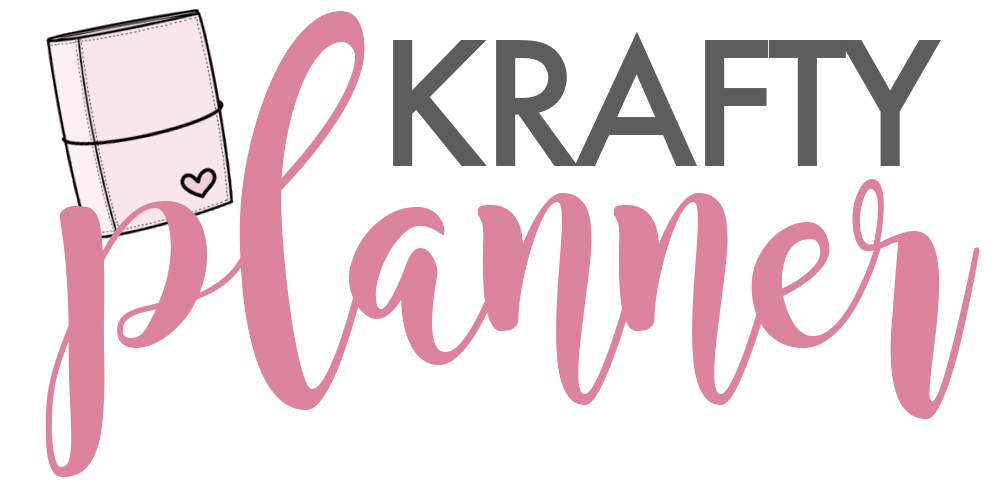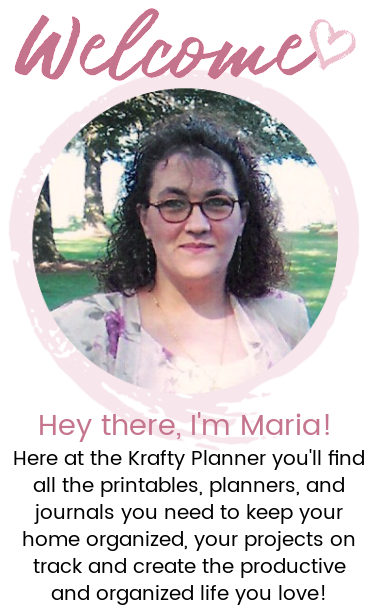P.L.A.N. Everything: How To Transform Your Planning Routine
One of the biggest challenges I hear from my readers is the struggle with consistency in using their planners. Many of you start with the best intentions, only to find the process overwhelming and difficult to maintain.
It’s easy to feel intimidated by the idea of organizing every aspect of your life, and the pressure to stay on top of everything can be discouraging.
That’s why I created the P.L.A.N. Everything concept, a comprehensive approach designed to revolutionize the way you view planning.
By breaking it down into four manageable and interconnected elements—Productivity, Lifestyle, Accountability, and New Beginnings—this method aims to help you develop a new outlook on planning.
My goal is to make the process less intimidating and more intuitive, so you can stay consistent and actually enjoy using your planner.
Today, I want to introduce you to each element of the P.L.A.N. Everything concept and show you how to integrate them seamlessly into your daily routine.
Whether you’re a seasoned planner or just starting out, this approach will help you harness the full potential of your planning system, making it a powerful tool for achieving your goals and improving your life.
So, let’s dive in and discover how to make planning a positive and rewarding experience!
Table of Contents
Click the links below to go directly to the following sections:
P: Productivity - The Cornerstone of Achieving Your Goals
Productivity is at the heart of the P.L.A.N. Everything concept because it forms the foundation for organizing your life and achieving your goals. It's about getting the right things done efficiently.
Here’s how to boost your productivity and make the most of your planning routine.
Setting Clear Goals
Start by defining clear, achievable goals. Know what you’re working towards, both short-term and long-term. Be specific and set deadlines to stay on track.
Breaking larger goals into smaller tasks makes them more manageable and less daunting.
Prioritizing Tasks
Not all tasks are created equal. Focus on what truly matters by prioritizing your tasks. Use the Eisenhower Matrix (aka the Quadrant Method) to categorize tasks by urgency and importance. Concentrate on tasks that drive you closer to your goals while minimizing time spent on less critical activities. You can learn more about it here and grab a free printable worksheet.
Time Management Techniques
Effective time management is crucial for productivity. Consider techniques like:
The Pomodoro Technique: Work in focused intervals (usually 25 minutes) followed by a short break to maintain concentration and prevent burnout.
Time Blocking: Allocate specific time blocks to different tasks or activities throughout your day to stay organized.
Batch Processing: Group similar tasks together and complete them in one session to boost efficiency.
Using Productivity Tools
Find tools and apps that help you stay productive and integrate them into your routine. Some popular options include:
Trello or Asana: For project management and tracking progress.
Todoist: A simple to-do list app for daily tasks.
Notion: A versatile tool for note-taking and project management.
Creating a Productive Workspace
Your environment affects your productivity. Create an organized, clutter-free workspace with all necessary tools and supplies within reach. Personalize it to make it comfortable and inspiring, but avoid distractions.
Maintaining Consistency
Consistency is key. Establish a routine that incorporates your planning activities and stick to it. Regular engagement with your planning system keeps you on track and ensures continuous progress toward your goals.
By focusing on productivity, you lay a strong foundation for the rest of the P.L.A.N. Everything concept. Clear goals, prioritized tasks, effective time management, the right tools, and a conducive workspace will enhance your productivity and help you achieve your goals.
Stay consistent, and watch as your planning routine transforms into a powerful engine for personal and professional growth.
L: Lifestyle - Integrating Planning with Your Daily Routines and Habits
Lifestyle is about making planning an integral part of your daily life, blending it with your routines and habits so that it becomes second nature. Here’s how to incorporate planning into your lifestyle effectively.
Morning and Evening Routines
Start and end your day with planning to set a positive tone and reflect on your achievements:
Morning Routine: Begin your day by reviewing your planner. Identify your top priorities and outline your tasks for the day. This helps you start the day with clear intentions and focus.
Evening Routine: At the end of the day, take a few minutes to review what you accomplished. Note any unfinished tasks and plan for the next day. This reflection helps you stay organized and prepares you for tomorrow.
Consistent Check-ins
Regularly updating your planner ensures that it remains a relevant and effective tool. Schedule consistent check-ins to review your goals and tasks:
Daily Check-ins: Spend a few minutes each day updating your planner. This keeps you aware of your commitments and helps you manage your time effectively.
Weekly Reviews: Set aside time each week to review your progress, adjust your plans, and set new goals. This helps you stay on track and adapt to any changes.
Flexible Planning
Life is unpredictable, and your planning should reflect that. Build flexibility into your planning process to accommodate unexpected events:
Buffer Time: Include buffer time in your schedule for unforeseen tasks or delays. This reduces stress and keeps you from feeling overwhelmed.
Adjustable Plans: Be willing to adjust your plans as needed. If something urgent comes up, move less critical tasks to another time. Flexibility ensures that planning remains a helpful tool rather than a rigid system.
Integrating Self-Care
Planning isn’t just about work; it’s also about ensuring you have time for self-care and personal activities:
Schedule Self-Care: Make self-care a non-negotiable part of your routine. Whether it’s exercise, reading, or a hobby, block out time for activities that rejuvenate you.
Balance Work and Personal Life: Use your planner to create a balanced schedule that includes both work and personal time. This helps prevent burnout and promotes a healthy lifestyle.
Creating Habits
Incorporate small, consistent planning habits into your daily life to make planning effortless:
Habit Stacking: Attach planning activities to existing habits. For example, review your planner while having your morning coffee or update your tasks right before bedtime.
Daily Rituals: Create small daily rituals around planning, such as setting aside five minutes each morning and evening for your planner. These rituals make planning a regular and enjoyable part of your day.
By integrating planning seamlessly into your lifestyle, you make it a natural and essential part of your daily routine.
This approach helps you stay organized, focused, and balanced, ensuring that planning supports rather than disrupts your life. Embrace these habits, and watch as planning enhances not only your productivity but your overall well-being.
A: Accountability - Ensuring Commitment and Consistent Progress Through Tracking
Accountability is crucial for turning your plans into reality. It helps you stay committed to your goals and ensures consistent progress by tracking your efforts.
Here’s how you can integrate accountability into your planning routine effectively.
Track Your Progress
Regularly monitoring your progress keeps you aware of how far you've come and what still needs to be done:
Daily and Weekly Reviews: At the end of each day, review what you’ve accomplished and identify any tasks that need to be carried over. Weekly reviews allow you to assess your progress toward larger goals and adjust your plans as necessary.
Use Visual Tools: Charts, graphs, and habit trackers can make it easier to visualize your progress. Seeing your achievements in a tangible form can be incredibly motivating.
Set Milestones
Breaking down your goals into smaller, manageable milestones helps maintain momentum and provides regular opportunities to celebrate success:
Create Mini-Goals: Divide larger goals into smaller, more achievable mini-goals. Each mini-goal acts as a milestone on the path to your larger objectives.
Celebrate Achievements: Recognize and reward yourself when you reach a milestone. Celebrating these small victories keeps you motivated and reinforces your commitment.
Find an Accountability Partner
Having someone to share your goals with can provide additional motivation and support:
Share Your Goals: Tell a friend, family member, or colleague about your goals. This external commitment makes you more likely to follow through.
Regular Check-Ins: Schedule regular check-ins with your accountability partner to discuss your progress, challenges, and next steps. This keeps you accountable and provides a support system.
Document Your Journey
Keeping a record of your journey not only holds you accountable but also allows you to reflect on your growth and learn from your experiences:
Journaling: Maintain a journal where you document your daily or weekly progress. Write about what worked, what didn’t, and how you felt about your progress.
Progress Logs: Use your planner to log your achievements and setbacks. This running record helps you identify patterns and make informed adjustments to your plans.
Utilize Accountability Tools
Leverage tools and technology to help you stay accountable and track your progress effectively:
Apps and Software: Use productivity apps like Todoist, Trello, or Asana to track your tasks and deadlines. These tools can send reminders and help you stay organized.
Habit Trackers: Incorporate habit trackers into your planner to monitor daily habits and routines. Seeing a streak of completed habits can be a powerful motivator to stay consistent. Here are 20 things to record in your tracker if you need some help getting started.
Review and Adjust
Accountability is an ongoing process that requires regular review and adjustment:
Monthly Reviews: Conduct a more comprehensive review at the end of each month. Assess what you’ve accomplished, identify any barriers, and adjust your goals and plans for the coming month.
Stay Flexible: Be open to adjusting your goals and strategies based on your progress and any changes in your circumstances. Flexibility ensures that accountability remains a positive and supportive aspect of your planning process.
Incorporating accountability into your planning process helps you maintain commitment to your goals and achieve steady progress toward their accomplishment.
Tracking your progress, setting milestones, finding an accountability partner, documenting your journey, using accountability tools, and regularly reviewing and adjusting your plans will help you stay on track and achieve your objectives.
Embrace accountability, and watch as it transforms your approach to planning and goal achievement.
N: New Beginnings - Embracing Fresh Starts and Opportunities
New Beginnings symbolize the endless opportunities planning can bring. Whether it’s starting a new project, embarking on a personal journey, or simply refreshing your routine, planning can help you make the most of these fresh starts.
Here’s how to embrace new beginnings and integrate them into your planning routine.
Embrace Change
Change can be daunting, but it’s also an opportunity for growth and improvement:
Stay Open-Minded: Approach new beginnings with a positive attitude. View them as opportunities to learn, grow, and improve.
Set Clear Intentions: When starting something new, set clear intentions about what you want to achieve and how you plan to get there. This gives you a sense of direction and purpose.
Create a Fresh Start with Your Planner
A new beginning can be as simple as refreshing your planner setup:
Revamp Your Layout: Experiment with new layouts and designs to keep your planner engaging and motivating. This can include changing your color scheme, trying new spreads, or adding inspirational quotes.
Add New Sections: Introduce new sections to your planner to accommodate your evolving needs and goals. This could include sections for self-care, habit tracking, or new projects. Here are 10 Must-Have Printable Inserts for Your Planner to get started.
Set New Goals
New beginnings are the perfect time to set new goals:
Identify Areas for Growth: Reflect on different areas of your life where you’d like to see improvement or change. Set goals that align with these areas.
Break Down Goals: Break your new goals into smaller, actionable steps. This makes them more manageable and increases your chances of success.
Reflect and Reset
Take time to reflect on your progress and reset your plans as needed:
Regular Reflection: Schedule regular reflection sessions to review what you’ve accomplished, what you’ve learned, and what you want to focus on next. This helps you stay aligned with your goals and adjust your plans accordingly.
Seasonal or Annual Reviews: Use the start of a new season or year as a natural point to reset and refresh your plans. Assess your achievements and challenges from the past period and set new goals for the upcoming one.
Celebrate New Beginnings
Celebrate your fresh starts and milestones to stay motivated:
Acknowledge Your Progress: Take time to acknowledge and celebrate the progress you’ve made. Recognizing your achievements, no matter how small, keeps you motivated and committed.
Reward Yourself: Treat yourself when you reach significant milestones. Rewards can be a great incentive to keep moving forward and stay enthusiastic about your new beginnings.
Stay Flexible and Adaptable
Life is unpredictable, and new beginnings often come with unexpected challenges:
Adapt to Change: Be prepared to adapt your plans as circumstances change. Flexibility ensures that you can handle setbacks and stay on track toward your goals.
Learn from Experience: Use each new beginning as a learning experience. Reflect on what worked, what didn’t, and how you can apply these lessons moving forward.
By embracing new beginnings, you can make the most of the opportunities that planning provides. Stay open to change, set clear intentions, create fresh starts with your planner, set new goals, reflect and reset, celebrate your progress, and stay flexible.
These practices will help you navigate new beginnings with confidence and enthusiasm, turning each fresh start into a stepping stone toward your greater goals.
Wrapping it up
The P.L.A.N. Everything concept is designed to transform the way you approach planning, making it a powerful tool for achieving your goals and enhancing your life.
By focusing on Productivity, integrating planning seamlessly into your Lifestyle, ensuring Accountability, and embracing New Beginnings, you can create a planning routine that is both effective and enjoyable.
I’m so excited to share more about the P.L.A.N. Everything concept with you. In the future, we’ll dive deeper into each element, explore practical tips, and provide additional resources to help you make the most of your planning journey.
Stay tuned for more insights and strategies that will empower you to take control of your life and achieve your dreams.
Remember, planning doesn’t have to be intimidating. With the right approach and mindset, it can become a natural and rewarding part of your daily routine. Embrace the P.L.A.N. Everything concept, and watch as your planning routine transforms into a powerful engine for personal and professional growth.
Thank you for joining me on this journey. I look forward to helping you unlock your full potential through effective planning.
Here are a few more posts you might like:
See my Link Party Directory for a current list of blog parties I attend each week.
This post was featured on the following link parties, thank you for your support! ❤️
FOR PERSONAL USE ONLY – Please Read Freebies Terms of Use
(This post may contain affiliate links. For more information, see my disclosures here)
~ SHARE THIS POST ~
Did you like this post? Do you know someone else who might enjoy it? Please take a minute to share it on Pinterest, Facebook, or your favorite social media… Thank you!



























